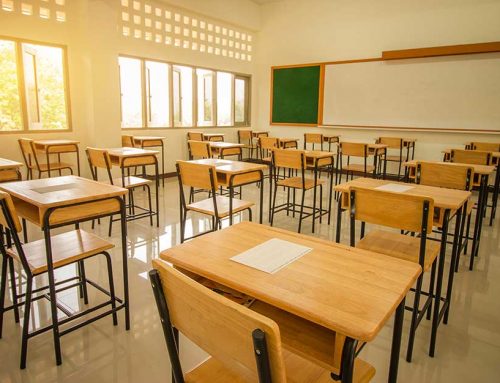Design is not just what it looks like and feels like. Design is how it works. – Steve Jobs
What is Design? Is Design a way of thinking and Problem-solving? The term “Design” most of the time was used for the sectors like interior designers, fashion designers, or software product designers and hardly was connected to Music, Engineering or Business industries. A Designer was always conceived as an individual who designs beautiful products. With the technological advancements, new thought processes are emerging and there are a wide variety of connections being established for Design and Designers.
What is Design Thinking and its importance?
Designers have the responsibility to find design solutions. Designers these days are following the process of Design thinking while designing their solutions. Design thinking is a problem-solving process with a user- center approach which prioritizes the users’ needs and uses a variety of tools to achieve the outcome. It is an approach used for practical and creative problem-solving. Design thinking can be applied to every sector including designing new products or finding out solutions for issues with an existing product. It is believed that there is no innovation without Design thinking. Hence Design thinking has emerged as one of the important tools in every sector. From designing an office space to office network or from the mobile phones we use to the cars we drive, almost everything is designed with the Design thinking approach. Designs created by the Designers have a huge impact on the environment and the community, hence designers have tremendous responsibility. They need to question themselves throughout the creation process to create efficient solutions.
Design thinking in IB education
The IB Education has identified the importance of Design Thinking for every individual at each stage of their life. To prepare students for these upcoming challenges, the IB MYP program, has incorporated a subject group named Design which provides students with a platform to do Design thinking and problem solving. IB Design is becoming increasingly popular in student groups as it challenges them to bring out the scientist and inventor from within. This Subject enables them to look out for solutions based on the issues faced by individuals or a group in a real-world context. At the initial stage students work towards designing for themselves which may include designing their own workspace or their room which may later be further challenged to designing for the community or individual client who is in need for a solution. At a later stage the projects may look like redesigning customer Workspace, Sustainable Office Space and Home Designing, Waste Management, App to avoid distractions for students, Designing a healthy meal plan, Designing an advertisement, designing a cable car, Water conservation and creating solutions to resolve traffic issues, Automated home designs to name a few.
The IB MYP Design focuses on a holistic design process by following the Design Cycle. This subject stresses on the process of creation of the solution rather than final product or solutions outcome. The process is based on real needs and contexts and challenges all students to:
- apply practical and creative thinking skills to solve design problems
- explore the role of design in both historical and contemporary contexts
- consider their responsibilities when making design decisions and taking action.
In MYP Design, students are like detectives. To get a deeper understanding of context they ask Who, What, Why, Where, When and How Questions. The questions are Open-ended, explorative, affective, reflective, probing, and analytical questions which help them to get a clear view of the current situation. This process helps them to come up with possible ways to critically map different ways to create the solution which will solve the problem.
IB MYP Design Cycle: A Design thinking and Problem-solving tool to bring learning alive
The IB MYP Design uses Design Cycle for Design thinking and problem solving. It comprises four stages, Inquiring and Analyzing, Developing Ideas, Creating a Solution and Evaluating. The four steps do not necessarily have to be completed in order, and it is essentially encouraged to backtrack and jump around when needed. During the process students are also exposed to develop various Approaches to learning skills.
Inquiring and Analyzing
This stage is an Inquiry section which helps the designers (students) to acquire a deep insight of the problem. During the first stage, designers must explain and justify the need for their project. This stage enables students to develop Affective skills while understanding the user needs and students work towards providing solutions for the problems faced by the client. This stage also expects students to research, explore existing products, and create a design brief, which identifies the requirements of the Design. Students develop information and media literacy skills while finding, interpreting, and analyzing information.
Developing Ideas
This stage is complex and crucial. In this stage students make design specifications, design multiple designs for the product, compare and contrast all the designs to finalize design for the prototype(blueprint). Then students work towards identifying the precise measurements, determining the required materials, estimating the time required and go over details such as color and scale. Students develop creative and critical thinking skills while working in the second stage of the Design cycle. They generate new ideas and perspectives from the research conducted in the previous stage and analyze them while designing the product.
Creating the Solution
This stage is ideally an action stage. During this stage students are challenged to showcase their technical skills. Students create a plan to bring the designs created in the previous stage alive. Here, technical skills are showcased by the students. They follow the logical plan to create the solution. In this stage, the designers are well prepared to take their ideas off paper and create them with physical materials. However, in this stage, designers should not feel restrained by their design(blueprint) identified in the previous stage. They should be open to thinking on the spot. Initial testing processes can be initiated during this stage and students can reflect on the plan they created while working on their product. If difficulties are encountered, alterations can be made to the original plan to improve the product quality and user experiences. Students develop collaboration and organization skills while they are working with the creation of the product. They must plan and work effectively with others and create logical plans and follow it for successful creation of the product.
Evaluating
This stage focuses on testing the product and its impact on the user or target audiences. During this stage different testing methods are developed; the success of the solution is judged and improvements to make the product is identified. This stage also provides designers with opportunities to reflect and revisit the previous stages to further develop or advance the product or solution as per the inputs provided by the user while evaluating the product.
Incorporating School Philosophy (Happy Minds Model) in Design Curriculum
At the Gaudium school, we strongly believe in our school philosophy of Happy Minds model and we always tend to reflect on how we are incorporating this model in our day to day teaching and learning. The five pillars in the Happy Minds model are Holistic Excellence, Core values, Mindfulness and Well-being, Stakeholder Engagement and Global Leadership.
While working on the different stages of the Design cycle, along with developing ATL skills, students also reflect on their learning and understanding of different practices defined in the Happy Minds model. This process provides students with an everlasting impression of learning by connecting across with other stakeholders in the community and developing a sense of compassion and empathy towards the issues faced by the individual and communities. These reflections make students open minded and empathetic towards others and while students work with other members in the community to come up with solutions to resolve their issues.
The Design Cycle in Action
Students are actively involved in the real-time problem-solving activities in my Design class. For finding out how the students actively involve themselves in these activities and follow the Design cycle, if they succeed in the product outcomes? What happens if the outcome is not intended? Please follow my upcoming blog posts to find out more about it!! In the following posts, I will talk about the MYP Design Cycle in relation to real in-class projects.






Leave A Comment